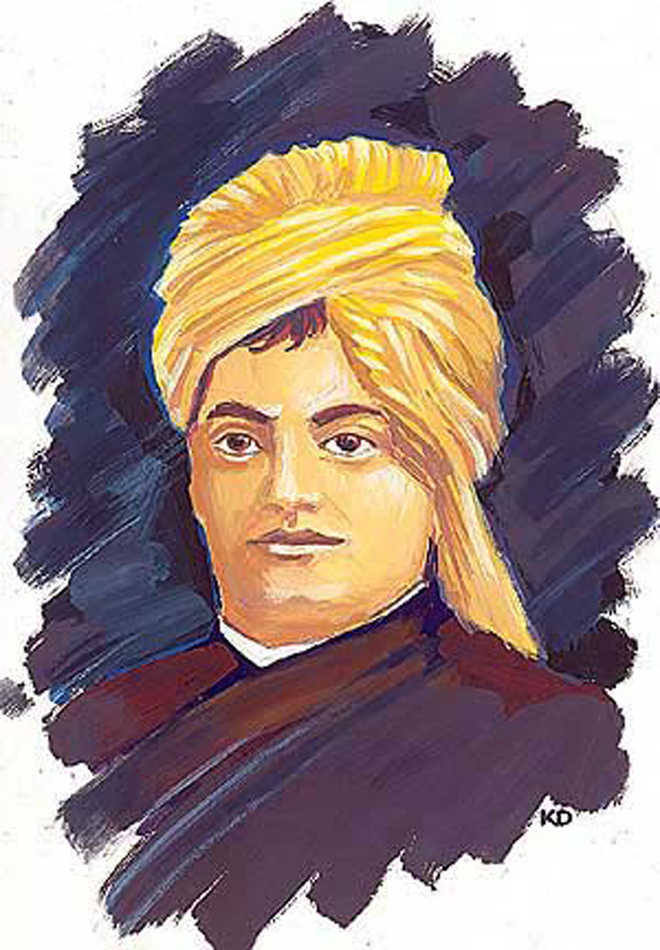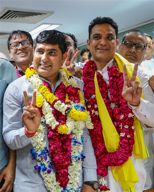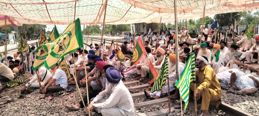
DR Satish K Kapoor
Swami Vivekananda’s book, Raja Yoga, was published in America in July 1895. It created a stir in religious circles because he proved that yoga is not magic, witchcraft, occultism or asceticism but a scientific and practical way to empower body, mind and soul. Basing his interpretation on the Yoga-sutra-s of Patanjali, he explained that the yogi seeks ‘to control nature, or the gross realm, by working in the subtle realm of the mind above nature’. Yoga fell into disrepute when the adepts kept it secret and secluded, ‘instead of letting the full blaze of daylight and reason fall upon it.’
William James (1842-1910), American Professor and psychologist, known for his insightful work, The Varieties of religious Experience, was so impressed that he came to meet Swami personally. The book ran into three editions in a short period, and was appreciated by Leo Tolstoy (1828-1910).
The general belief that Vivekananda expounded Raja Yoga, Bhakti Yoga, and Karma Yoga, not Hatha Yoga, which is the most popular yoga-form today, is not quite correct.
Vivekananda held that Hatha Yoga promoted physical culture, and did not have much to do with spiritual growth. Yet he regarded it as the means to an end — the realization of dharma. Although he did not impart lessons in different types of asana, the third of eight limbs of yoga, he suggested a simple posture — siddhasana — in line with the Yoga Sutra of Patanjali (II. 46) which says – sthira-sukham –asanam – ‘Yogic posture is that which is stable and comfortable’. While delivering his first lesson in Raja Yoga he advised thus:
‘After bathing, sit down and hold the seat firm, that is, imagine that you sit firm as a rock, that nothing can move you. Hold the head and shoulders and the hips in a straight line, keeping the spinal column free; all action is along it, and it must not be impaired.’
Vivekananda emphasised that an uncomfortable posture would impede concentration, and the body should not be forced to adapt it. ‘That posture which is the easiest for one should be the one chosen. For thinking a certain posture may be very easy for one man, while to another it may be very difficult’
The finer forms of Kundalini Yoga in America and Europe can also be traced to Vivekananda’s talks and works. In Raja Yoga he spoke about the art of breathing – its timing, importance, etc., purification of nerves, opening of the sushumna — current, chidakasha- ‘mental space’, chakras in the subtle body, siddhis, supernatural powers, Ojas, essence of inner vitality, transmutation of sexual energy into spiritual energy and so on.
Unlike the commercial forms of yoga, prevalent in America and Europe today, which totally ignore, or dilute its first two limbs — yama and niyama — abstentions and observances, Vivekananda emphasised the control of carnal desires and passions, as a prerequisite to the practice of yogic discipline. The impure mind cannot withdraw the senses from external objects ( pratyahara), fix it on a chosen object (dharana), or meditate, he said.
Anuloma–viloma pranayama, made popular by Baba Ramdev, finds mention in his work on Raja Yoga, though without its technical name. Likewise, he referred to concentration on the tip of nose, without mentioning that it is bhuchari mudra. He also explained how by controlling breath, ‘one may learn to control cosmic breathing, or prana, and thus come to master all nature.’ Of the six rites for physical purification as stated in the Yogic texts, he referred, in particular, to neti, in which liquids are taken in through the nose for cleansing and for therapeutic effect on the upper limbs of the body.
Vivekananda recommended self discipline, rhythmic breathing and contemplation on the sacred sound, Om (AUM), for mental peace and spiritual progress. To feel good, he suggested the following before morning prayer or meditation:
‘Sit in a straight posture, and the first thing to do is to send a current of holy thought to all creation. Mentally repeat, “Let all beings be happy; let all beings be peaceful; let all beings be blissful.” So do to the East, South, North and West. The more you do that the better you feel yourself. You will find at last that the easiest way to make ourselves healthy is to see that others are healthy, and the easiest way to make ourselves happy is to see that others are happy….’
Many Yoga teachers, giving lessons in Raja Yoga, Laya Yoga, Karma Yoga, Jnana Yoga, Bhakti Yoga, Kriya Yoga, Yogic breathing, Chakra-healing, etc, owe largely to the scientific explanation, originally provided by Vivekananda, which, in due course of time, has taken up new forms, and channels of expression, few knowing about the source.
(Dr Satish K Kapoor, former British Council Scholar and former Registrar DAV University, is a noted author, educationist, historian and spiritualist based in Jalandhar City)



























